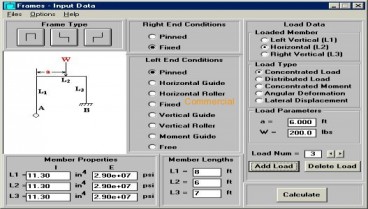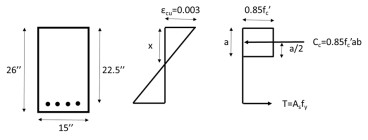Confinement (structural)
Concrete is a very brittle material and it can easily split in tension. On the other hand, steel reinforcement is strong in tension. In most cases, concrete and steel bars are met together on structural members of a structure. During earthquake the demand, on reinforced concrete members, increases. Using a smaller spacing of stirrups and therefore higher ductility, a confinement zone is introduced. This confinement zone enhances the ductility of the member, which means it can undergo larger deformations before failing. The confinement zone also helps to distribute the forces more evenly throughout the member, reducing the likelihood of local failure. Furthermore, when a reinforced concrete member undergoes cyclic loading during an earthquake, it goes through a series of hysteresis energy curves. This means that the member is able to dissipate energy as it undergoes multiple cycles of loading and unloading. The introduction of a confinement zone increases the hysteresis energy dissipation capacity of the member, improving its overall seismic performance.
Want to read more like this?
Concrete Structures
Jan, 01, 2019 | EducationConcrete structures are constructions that utilize concrete as the primary building material. Conc...

WinFrame
Nov, 29, 2013 | Software
TrussMe! Ipad App Lets Users Become Structural Engineers
Jun, 04, 2014 | NewsThere is an app in the Apple App Store that allows users of all ages and experience level, play the...

IDEA StatiCa Concrete
Aug, 28, 2023 | Software
RC Ductility Designer 2025
Feb, 26, 2025 | Software
Altair S-CONCRETE
May, 16, 2018 | Software
FIN EC Concrete 3D
Nov, 05, 2013 | Software
Vancouver fire hall achieves Zero Carbon emissions
Aug, 06, 2021 | NewsAs the Canada Green Building Council’s Zero Carbon Building Program is on the act, the city of Vanc...

Calculation Example - Calculate the member diagrams for the beam
Feb, 16, 2016 | EducationCalculate the member diagrams for Axial Force N, Shear Force Q and bending Moment M for the followin...
Trending

Diaphragms
Structural stability

Nominal flexural strength of a reinforced concrete beam

Calculate the Maximum Shear Stress

Truss deflection using the unit load method

Overhanging beam: shear force and bending moment calculation

Calculation Example – Beam with inner hinge (Part A). Find the Reactions

